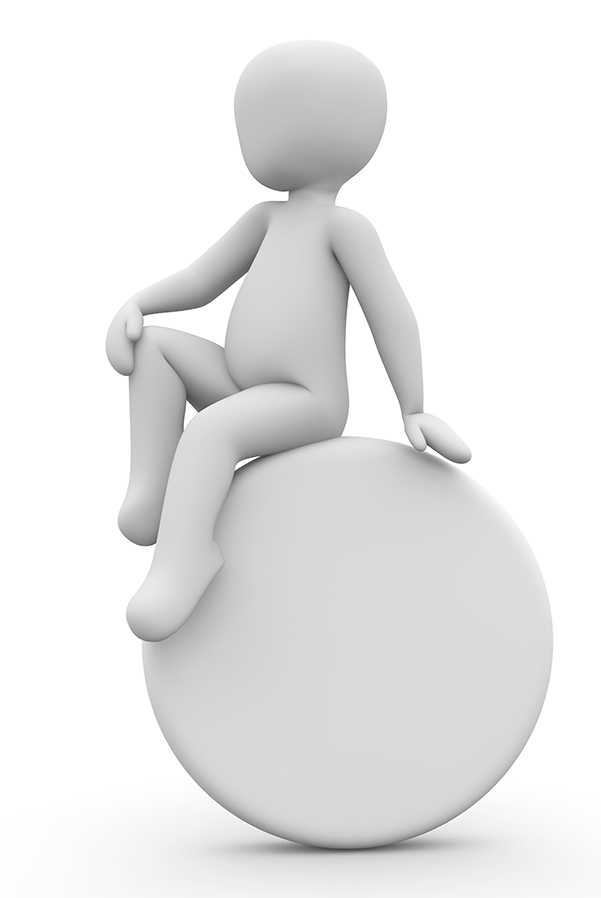Downloads
Dynamic Sitting
The hype around gym balls as office chairs continues. Employers are receiving more and more inquiries about using stability balls
as alternatives to office chairs. Sometimes these seating options are even recommended by physiotherapists because they are said to counteract a static seated posture and prevent postural damage and back pain. 
Many people want to know:
Is the stability ball or pendulum stool a healthy alternative to an office chair and is it right for our office?
What does the law say?
According to the RGD of 4.11.1994 concerning minimum safety and health requirements for screenintensive workplaces, the office chair must meet the following criteria:
· stability;
· unrestricted freedom of movement;
· comfortable sitting;
· adjustable seat height;
· backrest with adjustable height and tilt.
Neither the stability ball nor the pendulum stool meets these legal requirements; therefore, by law, they are not considered suitable alternatives to office chairs.
What do occupational physicians recommend?
Without a doubt, dynamic sitting is preferable to static sitting.
Dynamic sitting means that one’s seating position changes frequently.
|
Moving while sitting leads to a natural compression and decompression of the intervertebral
discs and muscles: · The discs consist of a fiber ring and gelatinous core, acting as shock absorbers between each vertebra. Just like a sponge, they absorb nutrients as pressure builds up and releases. · The expansion and contraction of the back muscles corresponds to the body’s natural movement, thereby promoting blood circulation and preventing muscle injuries and tension. |
Stability balls and pendulum stools keep the user remains in a constant unbalanced state. In order to maintain equilibrium, the user must constantly make small corrective movements using the back and spine muscles. Consciously or unconsciously, he or she has to concentrate to maintain this unnatural way of sitting. Without any back support, the user is quickly prone to hunching due to muscular fatigue. Stability balls and pendulum stools also pose a greater risk of falling.
With these risks in mind, it is important to understand what makes a good office chair. Office chairs are individually customized in order to prevent the need for these compensatory movements. A good office chair should support the user’s natural posture and promote movement in proportion to the office task. A tilting, height-adjustable backrest offers custom support for the spine in different seated postures, and the inclining seat pan allows for natural tilting of the pelvis to the front. The ergonomic office chair should also be equipped with a synchronous mechanism (i.e. the seat and backrest move relative to each other). By ensuring a controlled shift in the chair’s opening angle, this mechanism promotes a continuous change in leg posture and foot position.
|
Brief overview of the essentials: · Moving the spine supplies the intervertebral discs with nutrients. · An adjustable backrest provides custom support for the spine in dynamic sitting positions and prevents fatigue. · A tilting, height-adjustable seat supports a good pelvic position and promotes upright posture. |
What safety factors should be considered?
People working in screen-intensive environments need an office chair with different settings to allow for various ergonomic postures.
As previously mentioned, stability balls and pendulum stools do not meet the statutory minimum requirements for office safety and stability. Moreover, they present a significantly greater risk of falling compared to the legally prescribed office chair and offer limited options for individual height adjustment.
Finally, there is the risk of the ball rolling out of control, thus posing a safety threat to users and other people in the office and potentially obstructing traffic and escape routes.

Conclusion
The stability ball is an excellent training device for fitness and sports, but it is not a suitable alternative to an office chair.
Therefore, stability balls and pendulum stools should not be used in office environments.


